
Increasing the Accuracy of Load Cell Measurement Using Earth 5 Years ago
The accuracy of the signal to be measured has always been one of the basic challenges of electrical and electronic engineers. In this article, we are going to discuss the effect that earth has on the accuracy of the reading of the signal to be measured.
For this purpose, we have chosen a widely used signal, that is, the signal received from the load cell transducer, and the transmitter under test is the PM-LT01 transmitter.
As we know, the signal produced by the load cell is a signal with a very low voltage level, for example, consider a load cell with a characteristic of 2 mv/V by applying a voltage of 5 volts as an excitation voltage to this load cell. In the case that the maximum load is placed on this load cell, we have a value of 10 millivolts at the output of the load cell:
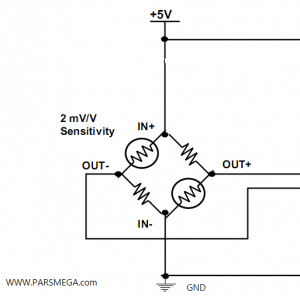
Now, if this load cell is 100 kg, how many volts will we have at the output per gram?
First, we convert 100 kg to gram unit:
![]()
Now we know that we have 10 millivolts per 100,000 grams, so there is 0.1 microvolts per gram at the output of the load cell.

We see what a very low voltage level we are dealing with and it is not difficult to imagine a noise with the same voltage level.
There are many ways to deal with noise, but the most important principle is the proper use of earth.
The issues related to the quality of an earth system are beyond the scope of this article. We only need to mention that the wire that is connected to the ground must have a low resistance so that it can easily transmit the disturbing signal to the ground.
But regarding the load cell, having a cable without a shield means leaving the door open for intruders to enter, so be sure to use a cable with a strong and suitable shield.
And when connecting the cable to the transmitter, pay attention to the shortest possible length without the wire shield.
Now let’s do some simple experiments regarding the effect of noise and check the results.
First, test with the following conditions:
Load cell 50 kg
120 Hz sampling frequency
We set the number of samples for averaging to 1 to eliminate the effect of averaging.
Note that during the test, the weight placed on the load cell is completely constant.
For this, you can easily use the program designed by Pars Mega.
When the program opens, go to the filter setting section and make the relevant settings.
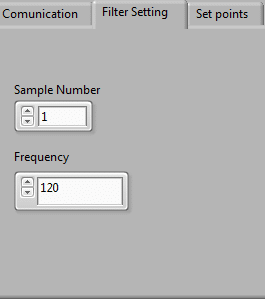
We will perform the first test without earth connection. For a better display, choose a few minutes for this time
We call this time T1.
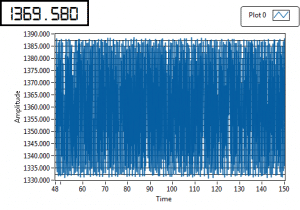
As you can see in the above figure, the highest weight read is close to 1385 grams and the lowest is 1330 grams, we see that we have a range of 55 grams as a game (Threshold).
In the second test, we add earth to our system, and we call this period T2.
notice
Be sure to connect the load cell shield cable wire and earth wire to the terminal placed on the transmitter, in other words, the transmitter itself needs earth to improve performance.
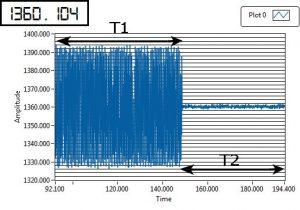
The figure says it all. The 55 gram range has become a 3.5 gram range. An unimaginable result that shows the importance of the earth system.
See what a great achievement we achieved by simply connecting an earth wire.
We have read a 50 kg load cell with a high sampling frequency of 120 Hz (that is, 120 new samples per second) with an accuracy close to 3.5 grams. That is, we have reached a resolution of 14285.
Let us repeat this experiment with another sampling frequency.
We select the highest and lowest sampling frequency.
First, the highest frequency of the PMLT01 transmitter is 4800 Hz
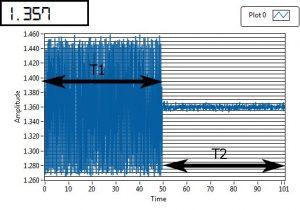
As you can see, the weight difference when the earth is not connected is 195 grams and after the earth is connected, it has reached 16 grams, which is a great accuracy considering the sampling frequency.
In another test, we choose the lowest frequency of the transmitter, i.e. 4.7 Hz, this is the frequency at which the highest possible accuracy of the transmitter, i.e. 1:100,000, can be reached.
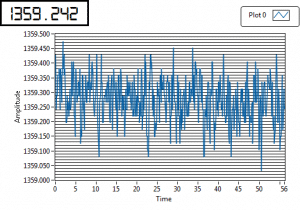
The above figure shows the test with a frequency of 4.7 Hz.
Considering that the selected frequency is very low, the digital filter inside the transmitter can perform well and there is not much difference between these two modes (with earth and without earth connection).
It should be noted that this test was performed in laboratory conditions and the test results may differ greatly in different conditions and according to different parameters.
Note that the amount of weight change in the last test is 0.4 grams, which is higher than the accuracy of 1:100,000.

